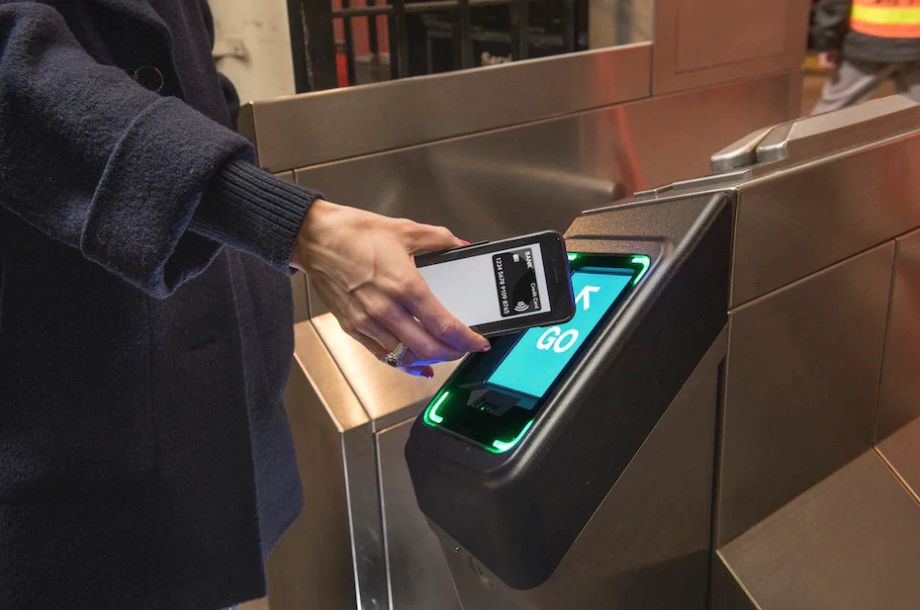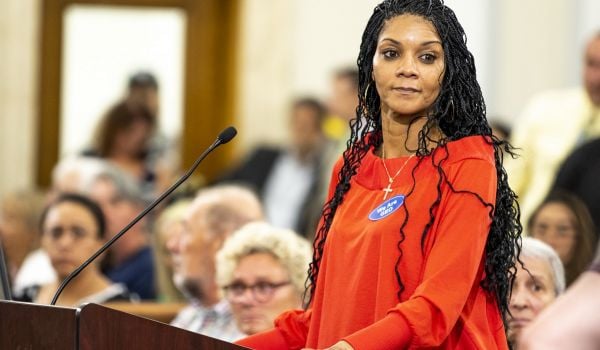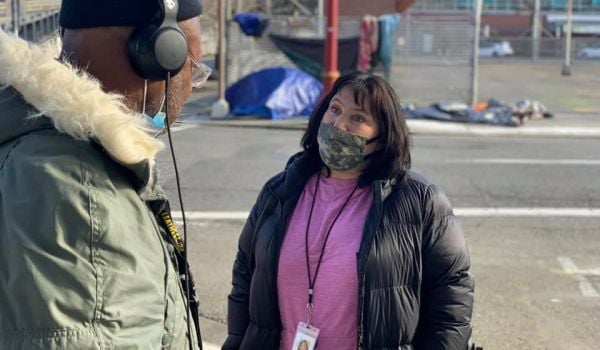Want to zip across your city on a scooter or bike share? All you’ve got to do is pull up your iPhone, tap through a few screens to reserve, pay, and maybe plan your trip and voilà — you’re on your way to your destination sans car. Similarly digitized approaches to fare collection are being adopted by public transportation systems around the world, especially as COVID-19 has thrust us into a no-contact world in the name of public health.
The move towards digitizing public transit has been lauded as a way to make cities more resilient. But what about those who get left behind in the rush toward cashless convenience?
A study completed late last year asked exactly that question in an effort to examine the issue of automated payment solutions in public transportation through an equity lens. It notes that 15% of adults in the United States don’t have a bank account or credit card. Others have voice-only, data-restricted cell phone plans that don’t offer the same freewheeling internet use to which others are accustomed. Some don’t have access to smartphones at all. This means a sizeable percentage of the population gets left behind when digital fare solutions are prioritized in the name of increased convenience.
“There was just not a lot of research on how different people are affected by changes in fare systems,” says Andrew Martin, a development planner for Eugene, Oregon-based Lane Transit District, who participated in the study in a personal capacity. “It’s pretty obvious that a fare system that uses smartphones might not be accessible for everyone… We have a group of riders who rely on [cash fares], whether it’s because they like it or trust it or whatever. We wanted to learn more about our system and riders but also how to help people more broadly.”
That’s exactly what the study, led by Aaron Golub, director and associate professor in the department of urban studies and planning at Portland State University, did. A central part of the motivation for the study is the fact that it’s estimated that over the next decade, the shift towards cashless systems is going to increase in the United States.
While this can amplify convenience for some and maximize data collection and the like for transportation agencies, it will erect barriers for some, many of whom are largely non-white and lower income.
Golub’s research explored current mitigation practices that allow people to pay transit fares in cash despite digitized systems, the effect of those practices on riders, and their efficacy in providing equitable access to transportation. The study accomplished this by carrying out case studies in Portland, Denver and Eugene; conducting two focus groups in East Portland and one in Eugene; and deploying sample surveys in all three cities. The study also looked at how far along the U.S. is in making the transition to cashless fares. Golub estimates that the country is about 10 years out from completing a full transition.
The study looked at instances where no cash was accepted, where cash was accepted at retail partners, where cash was accepted for payment on board transit, where cash was an option at ticket vending machines, and where cash was accepted everywhere. Golub’s research found that all of the payment options that included cash fares increased transit access among residents in the case study cities. When no cash was accepted, 91.62% of previous riders could still use the transit system. Retail-based fare purchases allowed 95.08% of previous riders to participate. Systems that accepted cash on board allowed 96.90% of previous riders to participate. When cash was accepted at ticket vending machines, 96.54% could use the system; and 100% of previous riders could use their transit systems where cash was accepted everywhere.
These results seem to point to accepting cash everywhere as the best way to go. But transit providers see drawbacks to that approach. Because the costs of handling cash and picking it up from various locations isn’t insignificant, Golub’s research analyzed how much it cost to implement the various mitigation efforts.
His study found that across 10 years, accepting cash for transit payment does incur additional costs. But cash systems also add riders, which leads to more net fare being collected every time another avenue for cash payment is added. The net revenue for systems that don’t accept any cash come in at roughly $980 million. That number increases to $1.01 billion when retail networks are added in, $1.02 billion when cash on-board is added in, $1.0 billion for cash at vending machines, and $1.03 billion for full cash acceptance at all outlets.
What does this all mean? “Within the 10-year transition, some of the worst effects could be avoided by using some of these mitigations,” Golub says. “It’s clear that we’re not ready to make the full transition to cashless systems yet. That’s probably the biggest lesson… A good share of riders claim that they could switch [to cashless], but I think that the lesson tells us that we need to be careful and communicate with our riders and be interactive with them, instead of [saying] ‘this is how things are done,’ or just putting out some program or policy.”
Martin agrees. “The research is really timely because this is something that’s becoming more available to more transit agencies. It used to be that you had to have a custom, in-house system like New York City and Chicago,” he says — big agencies that could afford to invest in the technology. But that tech is now more accessible and within reach of smaller agencies with smaller budgets. “As more agencies adopt automatic fare collections and explore reducing cash acceptance,” Martin says, “[the research] makes the case that we can easily address a lot of equity concerns” by finding ways to continue to accept cash in some form.

Cinnamon Janzer is a freelance journalist based in Minneapolis. Her work has appeared in National Geographic, U.S. News & World Report, Rewire.news, and more. She holds an MA in Social Design, with a specialization in intervention design, from the Maryland Institute College of Art and a BA in Cultural Anthropology and Fine Art from the University of Minnesota, Twin Cities.
Follow Cinnamon .(JavaScript must be enabled to view this email address)
















